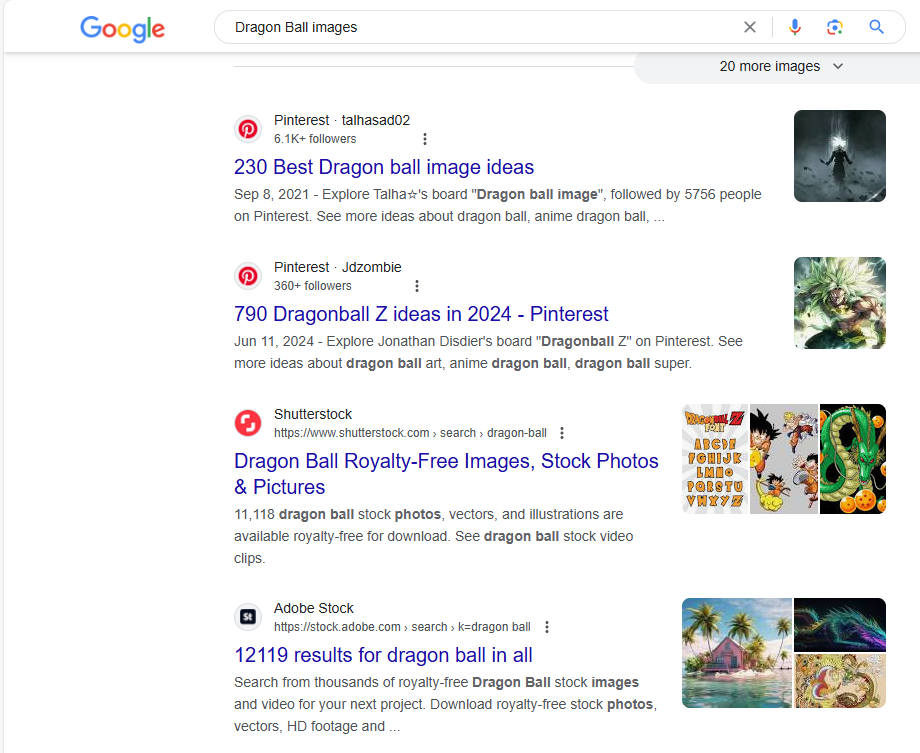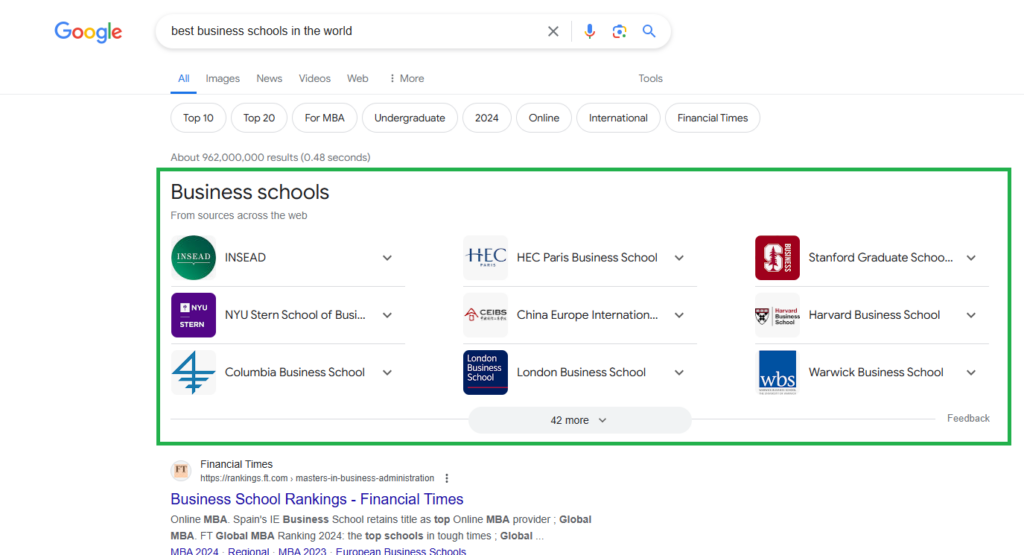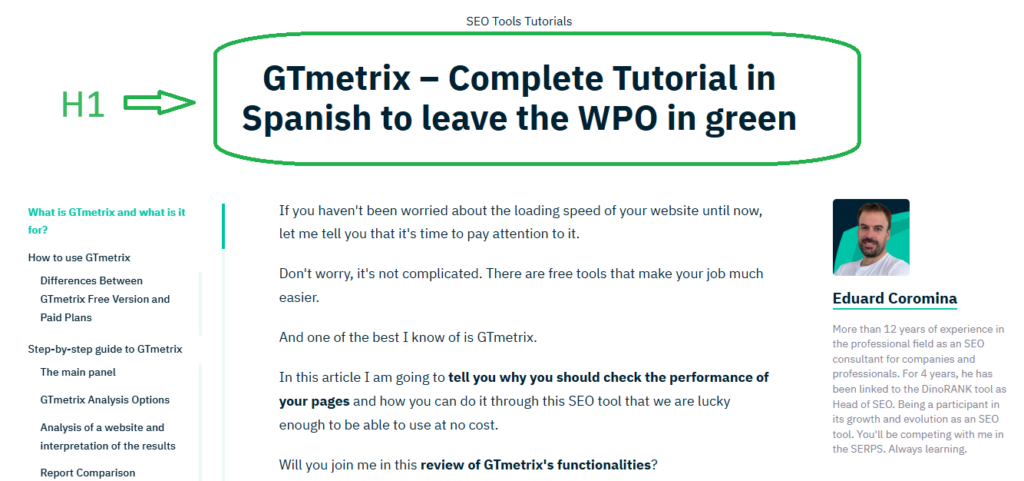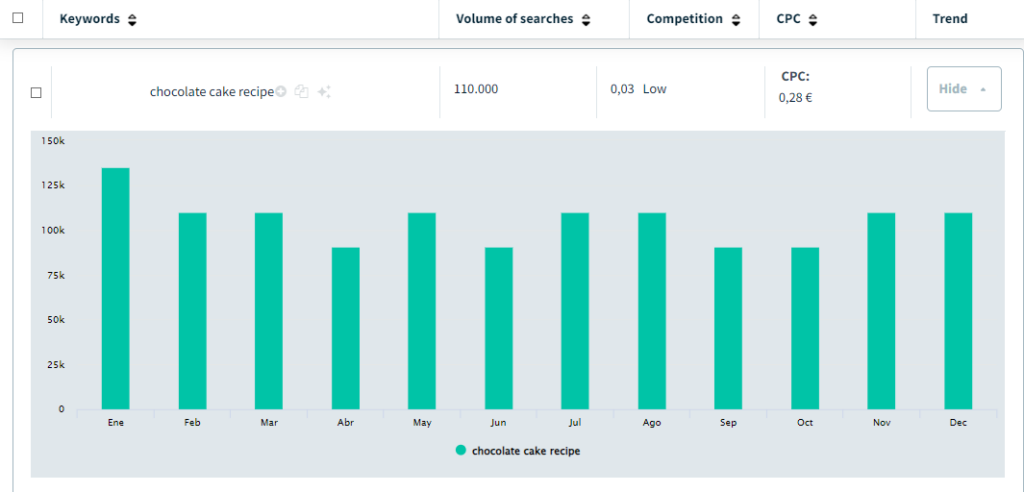A few years ago, I started my first blog with the idea of writing articles that could be interesting to those who wanted to learn about music.
However, if there’s one thing I realized quickly, it’s that those articles had no visibility on Google.
Why? For a simple reason: writing a plain text is not the same as writing an SEO text designed for search engine ranking.
That’s why today we can find really interesting articles on pages 2 and 3 of Google, while others that are not as engaging for the reader are on the first page, or even in the top positions.
To prevent this from happening to your content, in this article I will explain all the aspects you need to consider to write an SEO text so you can improve its position in the SERPs through content marketing strategies.
How to Write an SEO Text
Writing SEO-optimized texts is not very complex; you just need to keep a few factors in mind.
While it’s true that Google’s algorithm considers many aspects, it has been proven that to succeed with your articles you must at least consider the following points in your content SEO:
- Understanding search intent
- SEO content structure
- Keywords
- Competition
- Titles and headers
- Meta descriptions
- URLs
It doesn’t matter if they’re blog posts or SEO for landing pages.
Let’s look at each ranking factor for writing a post in more detail.
Understanding Search Intent
When a user accesses any search engine, for example Google, they intend to perform an action, whether it’s getting information, buying a product, hiring a service, etc.
This action is called search intent, and understanding it is fundamental to writing a good article.
That’s why if you want to write a text with the idea of ranking for the keyword “Dragon Ball images” you won’t succeed because the person who types “Dragon Ball images” into Google wants to see Dragon Ball images. In other words, the user’s intent is not to read a post. Google knows this, and consequently, it shows other formats and pages like ShutterStock or Pixabay and social networks like Pinterest in the top results of the SERPs.

Similarly, you should also understand this aspect and, therefore, only “target” search intents that you can address according to what your audience wants, that is, content that tends to rank much better.
In short, if you want your text to rank, the first thing you need to keep in mind is whether you will be able to address the reader’s search intent. And to do this, just go to Google and see what appears in the top 10 results.
This is the basic principle of SEO writing to start with.
SEO Content Structure
Related to the previous point is the structure of content optimized for SEO, which is simply the way we organize different ideas within our article.

Again, and once more, Google is the answer as you just have to search for the keyword you want to rank for in the SERPs and check the top results.
The way competitors organize their SEO content will guide you as it is the best content available right now.
If Google returns lists in the search results, you’ll need to create an article with lists. And if Google returns web pages with 3,000-word texts that are perfectly structured, you’ll need to replicate that. It doesn’t matter if it’s regular SEO or local SEO.
In this regard, I usually use DinoRANK’s TF*IDF feature as it indicates the content length and how it is hierarchized by headings. Analyze these headings and create a good content structure based on them (don’t worry, we’ll look at this in more detail in a few minutes).
Text Length
This is one of the most controversial moments in SEO for content. Until recently, it was strongly insisted that if you want to rank at the top of the SERPs, the text writing had to be extensive and include the maximum number of words possible to make it very long.
However, this is not the case (or at least it no longer is).
Therefore, and as I mentioned in the previous point, you need to analyze your competition and see the length of their articles. You shouldn’t write more content than necessary or add fluff; instead, write naturally.
Keywords
This point is critical, and I didn’t include it first in this content creation list to maintain a logical sequence for writing articles based on content marketing.
What are keywords? Keywords are words or sets of words used to describe the content of an article and have a certain amount of monthly searches that can bring traffic to our website.
Thus, these keywords are fundamental in any SEO strategy for content.
So much so that before you start writing, you need to conduct keyword research to see which ones should appear in your SEO article.
For this, you need to consider both those derived from the main keyword and those LSI (Latent Semantic Indexing) keywords that should appear by the nature of the text.
Let me give you an example: imagine you are writing about a recipe for air fryer French fries, you will need to consider the keywords for its SEO positioning (such as “how to make French fries in an air fryer”).
However, in addition to that, you should also search for synonymous and related words for the recipe, such as oil-free fryer, air fryer, fries, peeler, knife, ketchup, etc.
To get the keywords derived from the main one, you can use the Keyword Explorer feature of DinoRANK, while to get those related words that the competition has already included, you can use the TF*IDF function again.
We will look at both tools in more detail in a couple of minutes.
Doing these actions will give you a wide range of keywords to help you position your SEO text.
Competition
Analyzing the competition is so important in any SEO strategy that I’ve mentioned it several times already without even reaching this point.
So, to avoid repeating myself too much, I’ll simply remind you that you need to understand how your competitors structure their content and what keywords they are using.
This way, you’ll get a comprehensive view of how you should generate your own content.
Be careful! The idea here is not to copy and paste, but to learn, understand, and see how we can provide a better response to the user with our website or niche.
Headings
Once we have our SEO text written, we need to give it a title, which is critical.
Keep in mind that the SEO title or H1 of your content is the first point of contact between Google and your article. This is why it needs to be attractive (SEO copywriting can help here), clear, and, of course, it should contain the main keyword.
Similarly, you should add other headings to mark the different sections of your content. This will allow you to structure your article with H2, H3, H4 levels, etc.

Internal Linking or Interlinking
Another fundamental aspect when optimizing SEO texts is internal linking. This is crucial for several reasons.
The first is that when we link to an article, the anchor text indicates to search engines what the linked page or post will be about, which helps reinforce its semantics.
Additionally, linking to an article multiple times increases its Page Rank, or in other words, its importance within your website.
On the other hand, we must not forget about the user because interlinking should be designed with the idea that the user can navigate from one article to another within your site.
So, if in an article you introduce a concept that you think the user might want to know more about, you can create a link to that article so they can access it.
You can also create external links to authoritative pages related to your content that expand or support what you are saying in the post.
Other Aspects of the Past
In addition to what was mentioned earlier, I would like to highlight two aspects that used to be important for SEO content positioning but no longer hold the same weight.
The first one is the URL, which has lost importance over time. As a best practice, I recommend that it contains the keyword, isn’t too long, and is user-friendly.
However, as I said, this factor is no longer critical.
Similarly, meta tags also no longer play a critical role in the positioning of your SEO text. In any case, I advise optimizing them with the goal of improving the CTR (Click Through Rate), meaning, improving the chances that the reader will click on your article instead of a competitor’s.
SEO Tools to Find Keywords
As I mentioned earlier, keywords play a crucial role in SEO positioning. Therefore, you must find all the keywords related to the article you need to write and include them based on their importance.
With this in mind, they should appear with a frequency directly proportional to their search volume.
To find these keywords, there are various SEO tools available, both free and paid.
Widely used free tools include Answer The Public, Keyword Surfer, and Google’s Keyword Planner. These tools are great because they allow you to obtain a wide variety of keywords, including short-tail, middle-tail, and long-tail keywords.
However, these tools do not allow you to know the exact volumes for each keyword, their CPC, or trends over time.
Therefore, if you really want to create optimized SEO texts, you should use professional tools. Some of the most widely used today are Ahrefs, Semrush, and DinoRANK, which is by far the most affordable of the three.
To obtain your keywords, you have three options, as I mentioned earlier:
- Use the Keyword Explorer
- Use the TF-IDF function
- Use the visibility module
Let’s dive into each one of them.
Keyword Explorer
The keyword explorer is a feature that allows you to obtain a broad list of keywords from a main one, which we call a seed keyword.

You just need to plant that seed in the Keyword Explorer, select the country and the same language you want to rank for, and hit search. At this point, you will see a wide list of variants that should be considered based on their volume and CPC.
However, I want to advise you to be careful with introducing too many derivatives of a main keyword as it can end up generating a text overloaded with that keyword (or keyword stuffing).
And this aspect not only affects optimizing a text for SEO in the eyes of Google. Put yourself in the user’s shoes and imagine you start reading an article and in the first paragraph, you see the same word 3 times. Don’t you think you’d leave in 5 minutes?
We solve this with the TF*IDF module.
TF*IDF
To avoid the problem with our post from the previous section, I recommend using the TF IDF functionality.
This is a tool that analyzes the top 10 competitors and extracts the keywords they use to rank their SEO texts in Google results.

Using this module will provide you with a broad cloud of words or entities related to the topic of your article.
Remember the example I mentioned about air fryer french fries? Well, it’s not the same to find the keyword “air fryer” 10 times in the same article as it is to read “air fryer,” “airfryer,” or “oil-free fryer.”
All of these are variants of the first and help give your content a semantic richness that only a natural article can have.
Visibility
In addition to the 2 options mentioned before, there is a third one I would like to discuss: the visibility module.
This tool is perfect for analyzing competitors individually. Let me explain: if you want to see the keywords a competitor is ranking for in the top positions, you just need to enter their domain name in the box on the left and hit search.

At this point, it will offer you a table with the main keywords they are ranking for, along with their volume, the position they hold in the SERPs, and, of course, the traffic they get.
So, how can we adapt this functionality to our goal of writing SEO content?
It’s very easy, you just need to input the URL of the competitors you’re interested in, select the URL option, and you’re all set. You’ll have all the keywords for that specific article.
Writing content with AI
At this point, you might start thinking that creating SEO content is quite labor-intensive.
And the truth is, it is.
Luckily, we live in an era where artificial intelligence is becoming increasingly powerful, making our lives easier in many ways.
One of these ways is how to create optimized text for SEO.
Nowadays, there are tools like Open AI’s Chat GPT that can be very helpful for getting ideas for topics, finding some relevant keywords, or even drafting a section.
However, I want to emphasize that it’s best to only draft part of the content because this tool is not optimized for writing full SEO texts.
For starters, it can’t understand the search intent and, on top of that, it’s outdated because its database is from 2021.
Don’t worry, once again DinoRANK comes to the rescue.
The latest feature of this SEO tool is DinoBRAIN, a module that allows you to generate SEO texts.

Let me explain, this tool has been developed to generate texts that rank well in search engines. It has two key aspects for this purpose.
The first is its internet connection, which allows it to stay updated at all times.
The second is that it has been developed based on the aforementioned TF*IDF. This has great benefits for SEO optimization as it meets many of the factors previously mentioned.
First of all, I’d like to remind you that the first thing this module does is analyze the competition.
This way, it manages to understand not only the search intent but also other key aspects, such as the header structure and the length the text should have.
But the strong point comes now because TF*IDF, in addition to all of the above, has the main mission of obtaining all the keywords and related terms that should appear in your text to rank on Google.
This allows, as I mentioned, to generate SEO-optimized content that truly ranks on Google.
But there’s more.
In addition to everything I’ve mentioned, this tool also offers you an AI-generated image and the ability to upload everything to WordPress with just one click.
Did you come to this article looking to learn how to create SEO texts and write a good post?
DinoRANK is the answer
Human Touch
While this article could perfectly end in the previous section, I feel it’s necessary to include an additional part.
The reason for this is that I see more and more, all of us (myself included) using AI tools to generate content and publishing it just as it is generated.
So what happens?
We run the risk of losing the human touch.
Therefore, for a while now, I make it a habit to read the generated content and give it a human touch.
Call it copywriting, storytelling, or whatever you like.
But at the end of the day, you’re now reading a text that has been partially generated with the help of DinoBRAIN, but I’m telling you in the first person, adding my experience and personal touch, making it easier to read.
In fact, you probably wouldn’t have thought that this content was generated thanks to AI if I hadn’t told you just now.
That’s why giving our content a final touch-up is recommended depending on the sector for which you’re writing your texts.
Tips
If you’ve made it this far, you deserve a reward, which I’ll give you in the form of tips that I follow when writing SEO-optimized texts.
- Don’t go crazy with the words: writing more doesn’t necessarily mean better ranking. You need to analyze how many keywords an article should have based on the competition and remember that the important thing is to respond to the search intent using common sense.
- Include images: add images related to the content that help the reader understand the text, and don’t forget to include the alt tag with keywords and semantic terms.
- Avoid long paragraphs: Don’t write paragraphs longer than 4 lines because they’ll be too cumbersome to read.
- Keep it simple: if you’re writing about something someone wants to learn about, don’t use overly complex language or get bogged down with jargon. Obviously, you need to include necessary terms, as they are keywords to include. But the idea is not to sound too sophisticated; use a straightforward way of expressing yourself.
- Revisit the text after a few days: this is a practice I recommend as I always find areas for improvement.
- Proofreading tools: there are many proofreading tools, like LanguageTool, that can help you avoid spelling mistakes.
With this, we wrap up this article on content writing. I hope you now have a clearer idea and no more doubts about how to write an SEO-friendly text.

